356 Electronics Fabrication Lab
Van Leer C-356 is a dedicated lab space geared towards electronic fabrication and assembly. Create a printed circuit board and 3D print custom pieces, or use the open bench spaces to assemble and test electronic devices.
Access
Van Leer C-356 is a 24-hour access lab available for us by all ECE senior design students as well as students enrolled in ECE 3011. If you would like to get access to the lab, please come by the Instructional Lab Main Office to make a request.
Safety
Safety glasses and first aid can be found on the back wall of the lab. Everyone must use safety glasses and the bench-top fume extractors when using soldering equipment. Nitrile gloves are also available in different sizes for students that would like to use them. The laser cutter is attached to an air filtration system and a large fume extractor is also available for use. This equipment will not capture toxic gas, so only approved materials will be allowed to be cut.
Equipment
Click to Show
| Equipment Name | Usage | Image |
| Ultimaker S5 3D Printer | Prints multiple types of plastic and composite materials for simple prints or prints that require specific materials. | 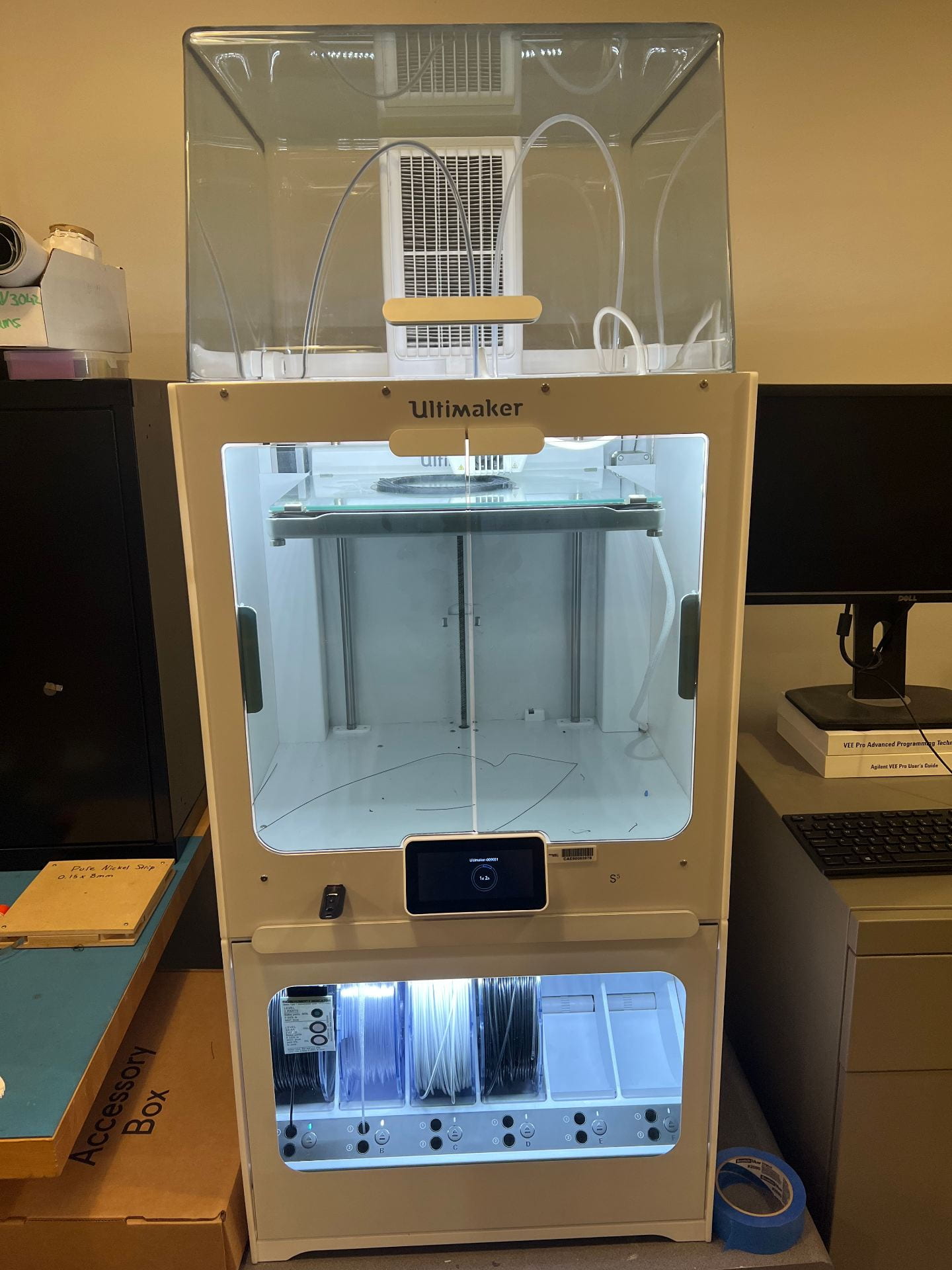 |
| Stratasys f170 3D Printer | Prints ABS plastic at high resolution with dissoluble support material to allow for complex prints with moving parts. | 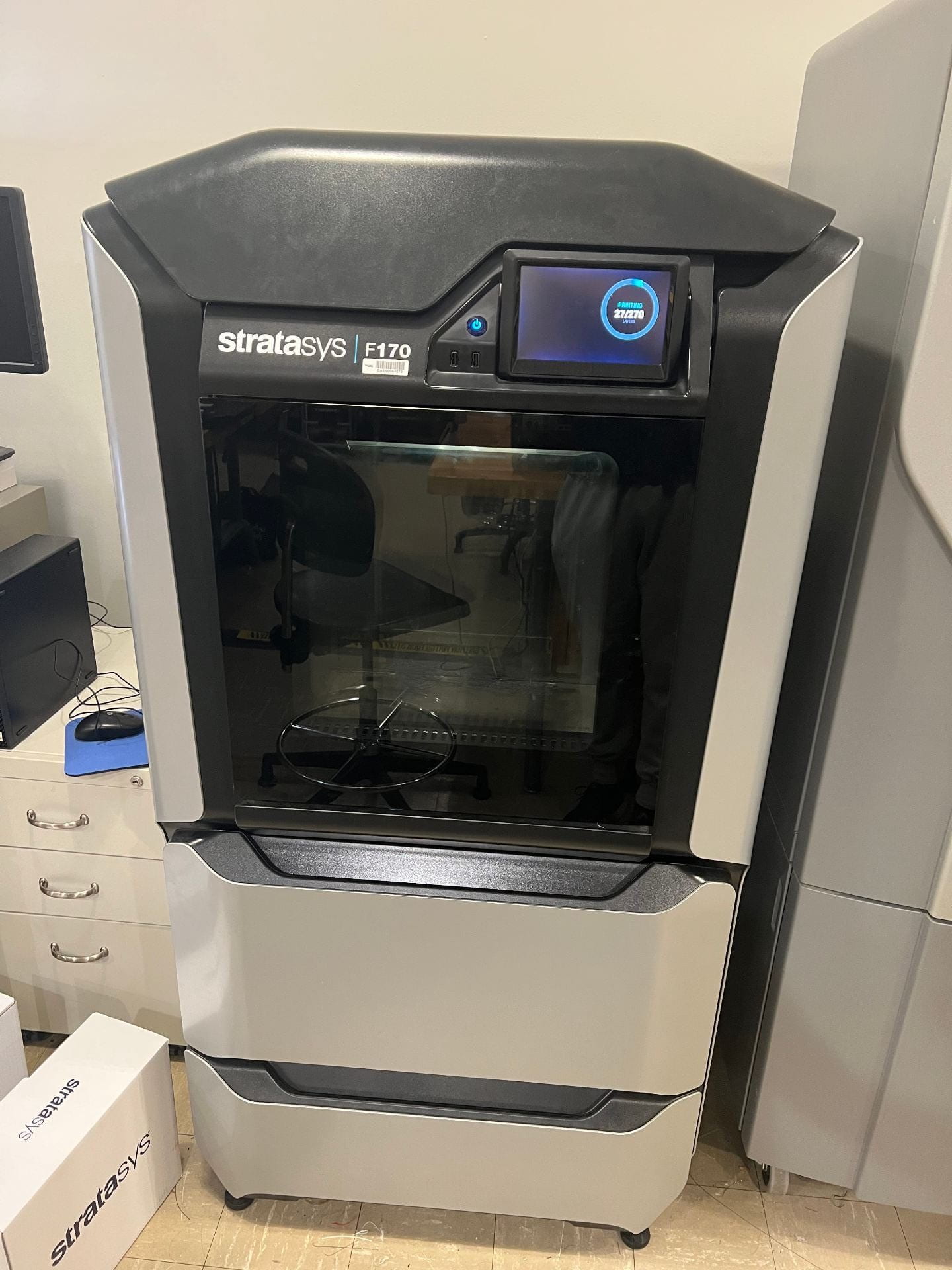 |
| Dimension sst 1200es 3D Printer | Prints ABS plastic at high resolution with dissoluble support material to allow for complex prints with moving parts. | 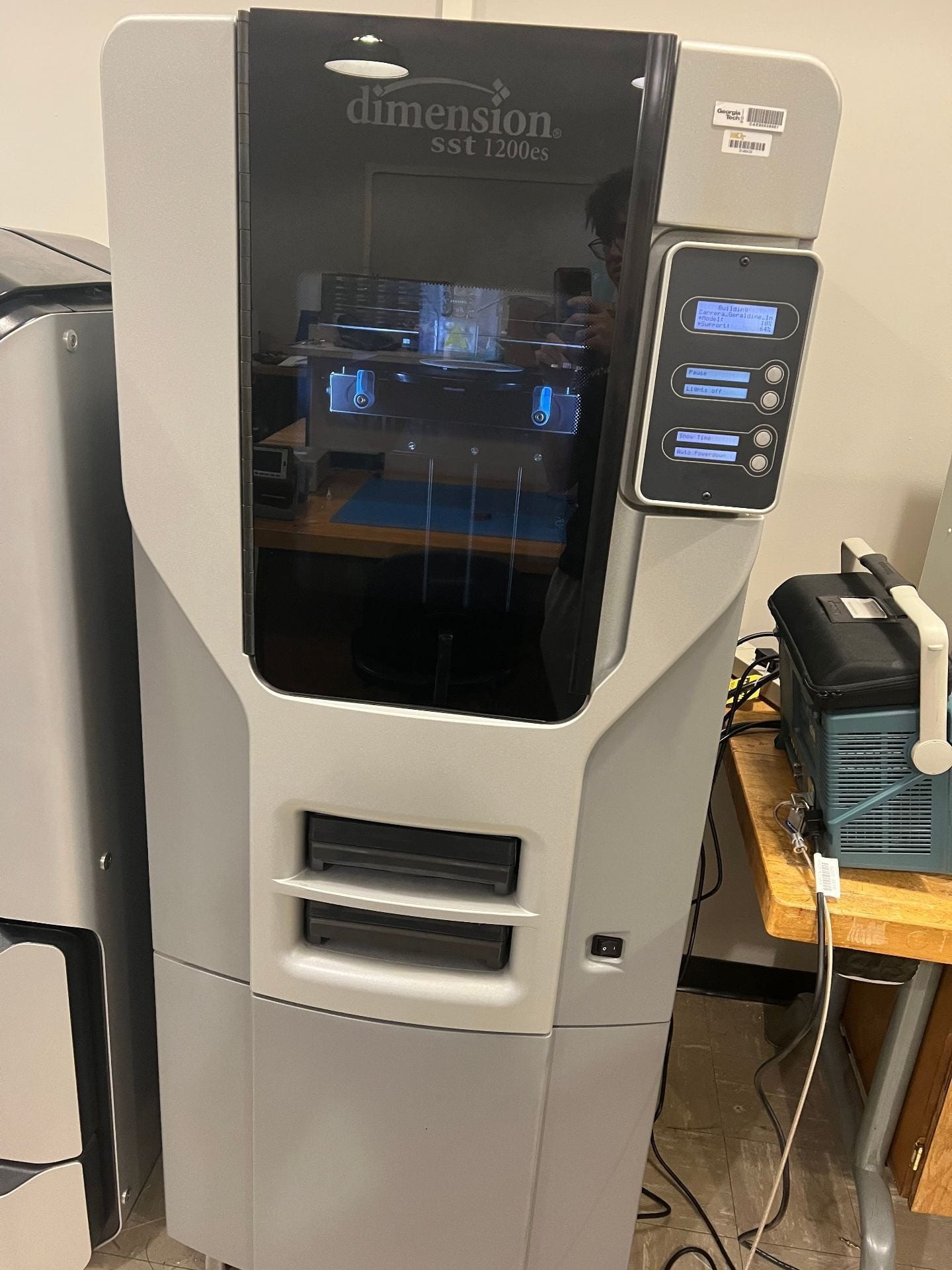 |
| LPKF S103 PCB Milling Machine | Mills one and two layer printed circuit boards on multiple fabrication materials. | 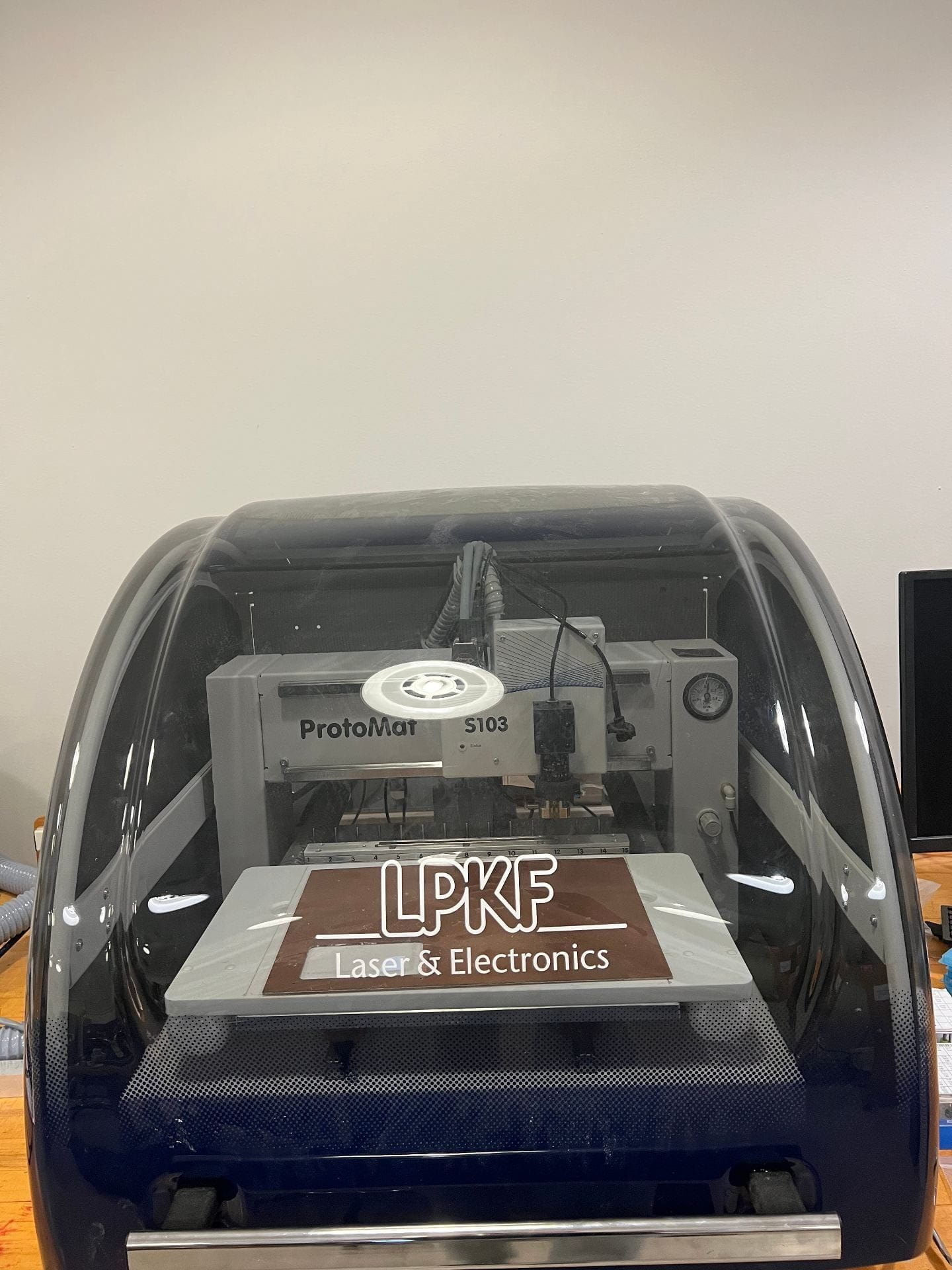 |
| LPKF Pick and Place Machine | Place surface mount components on a circuit board to prepare for solder pasting. | 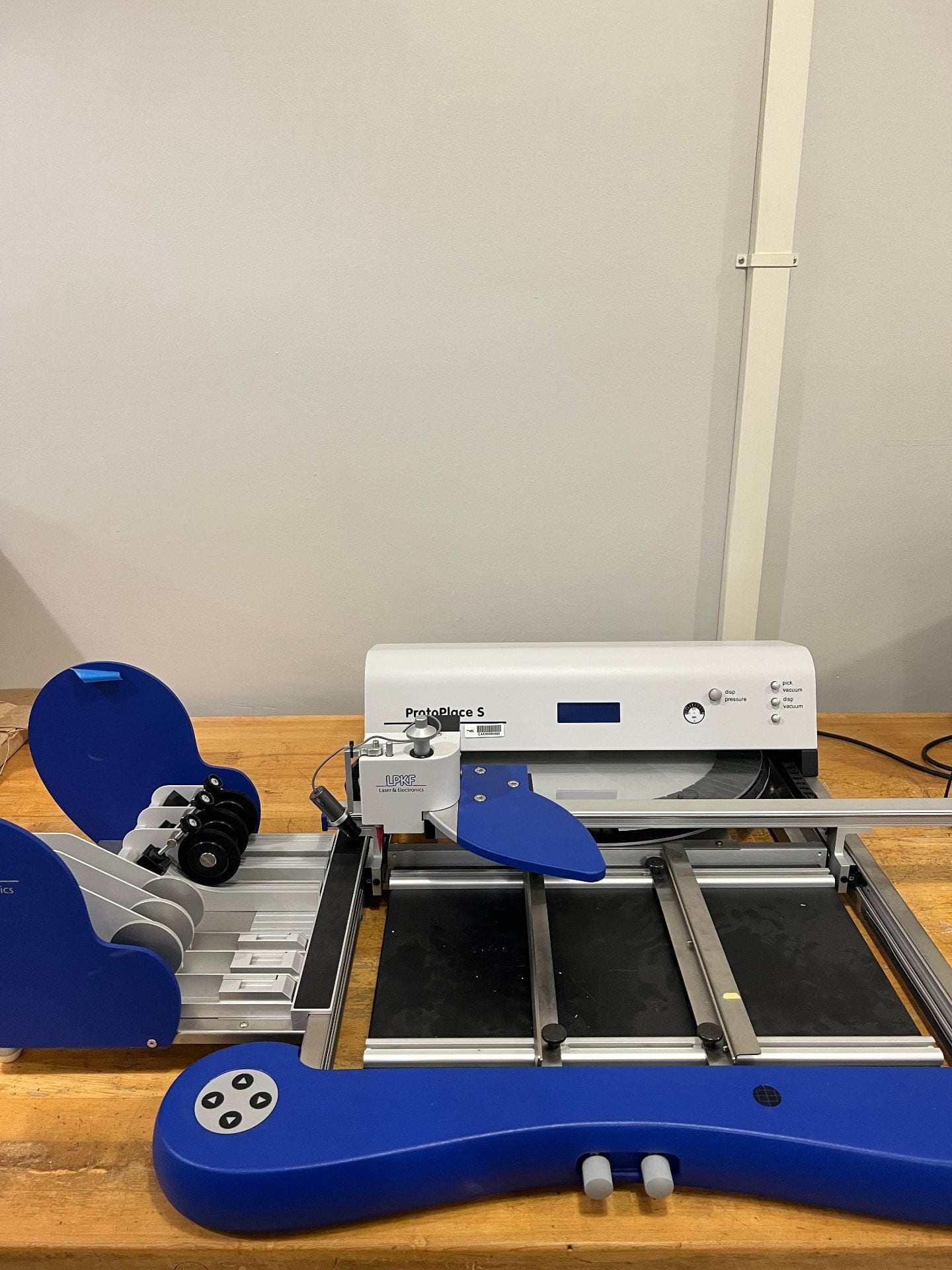 |
| LPKF Solder Mask Applicator | Cover bare copper circuit boards with solder masks that prevent solder from sticking outside of designated pads. | 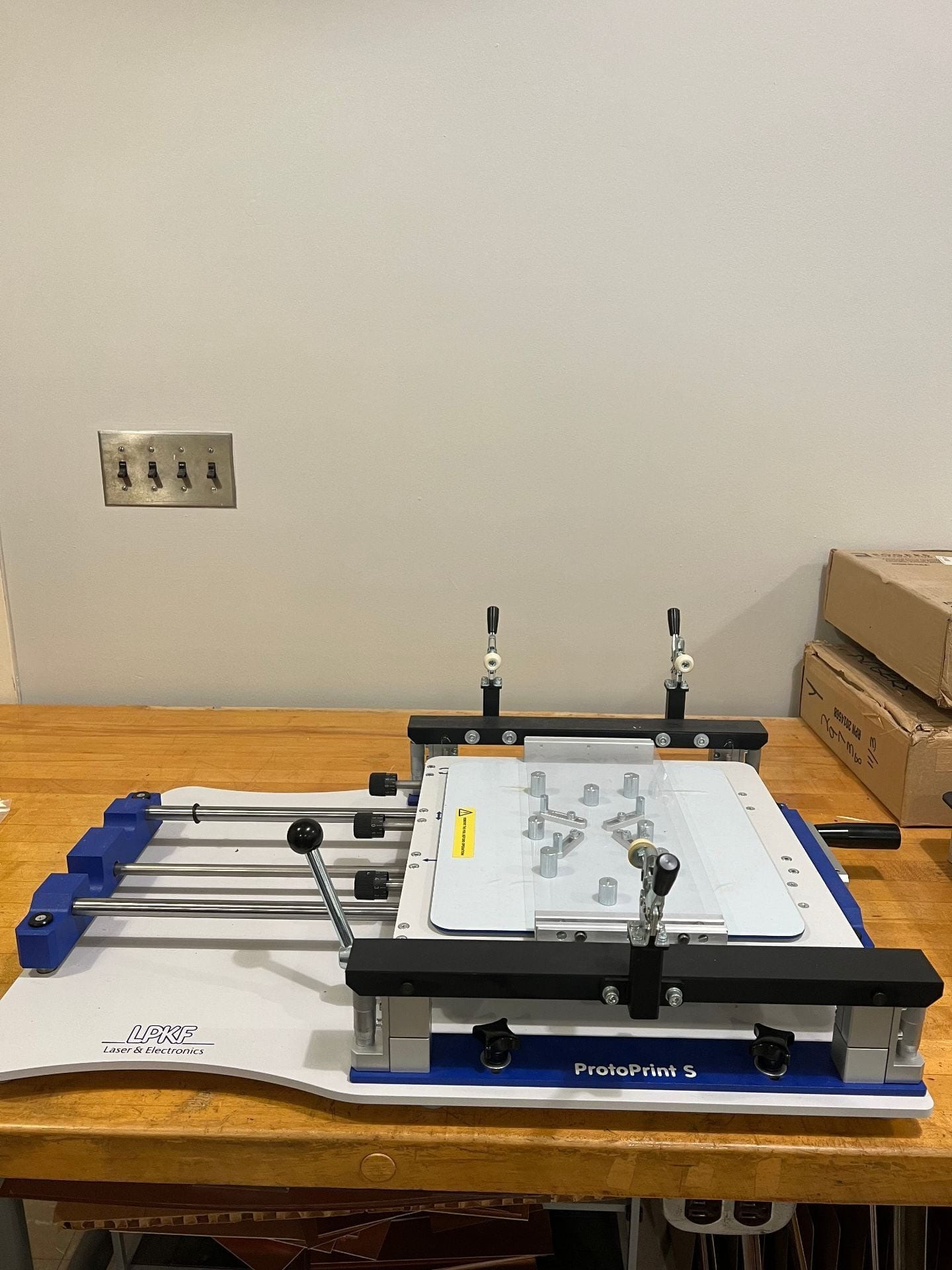 |
| LPKF Reflow Oven | Bake solder pasted components to your circuit board for quick and reliable connections. | 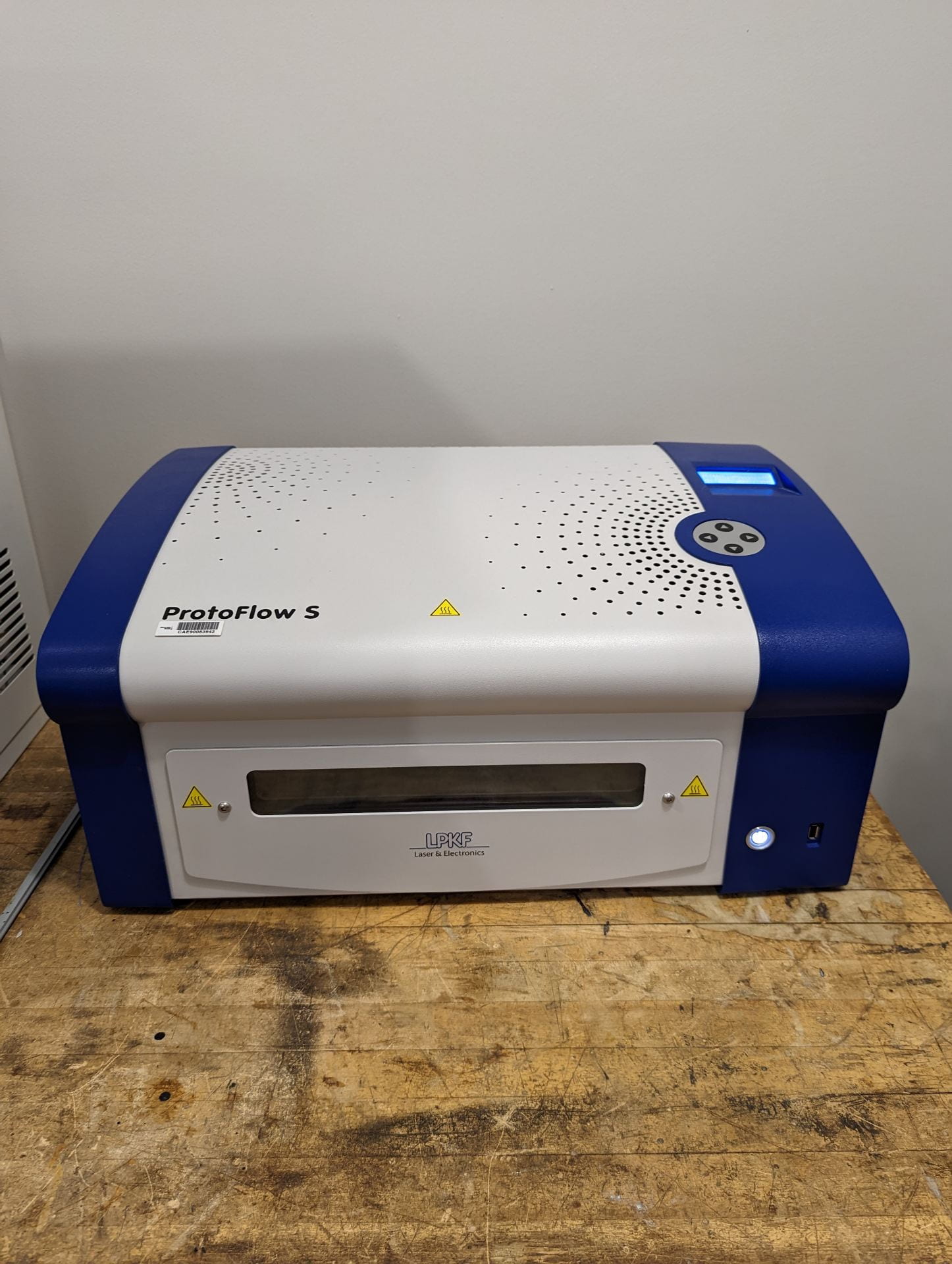 |
| Sunstone Battery Spot Welder | Create custom battery packs for your projects in order to achieve the exact voltage and power specifications. | 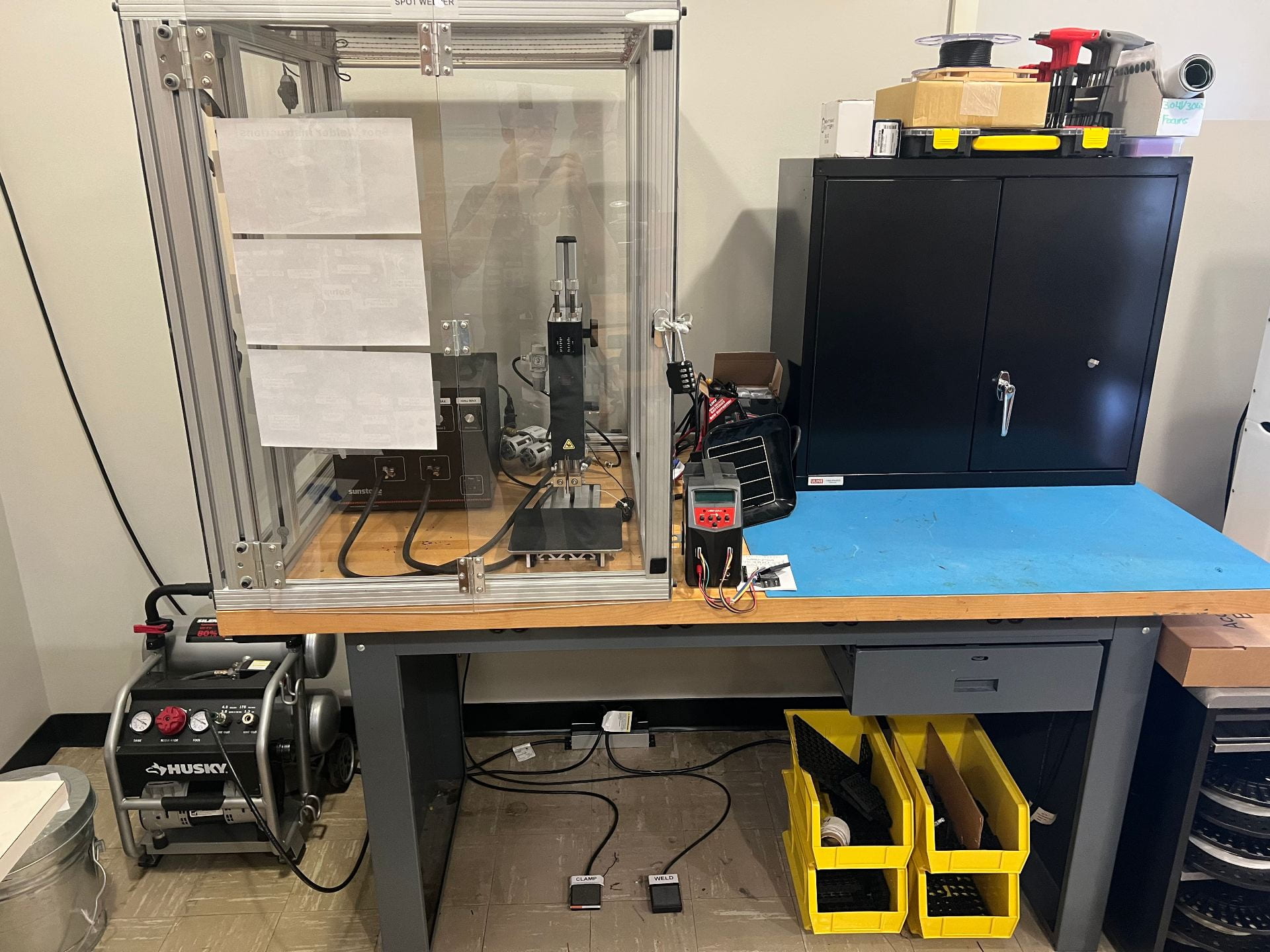 |
| TPS Environmental Test Chamber | Test your devices and components in hot and cold environmental conditions ranging from -70 to 200 degrees Celsius. (Manual) | 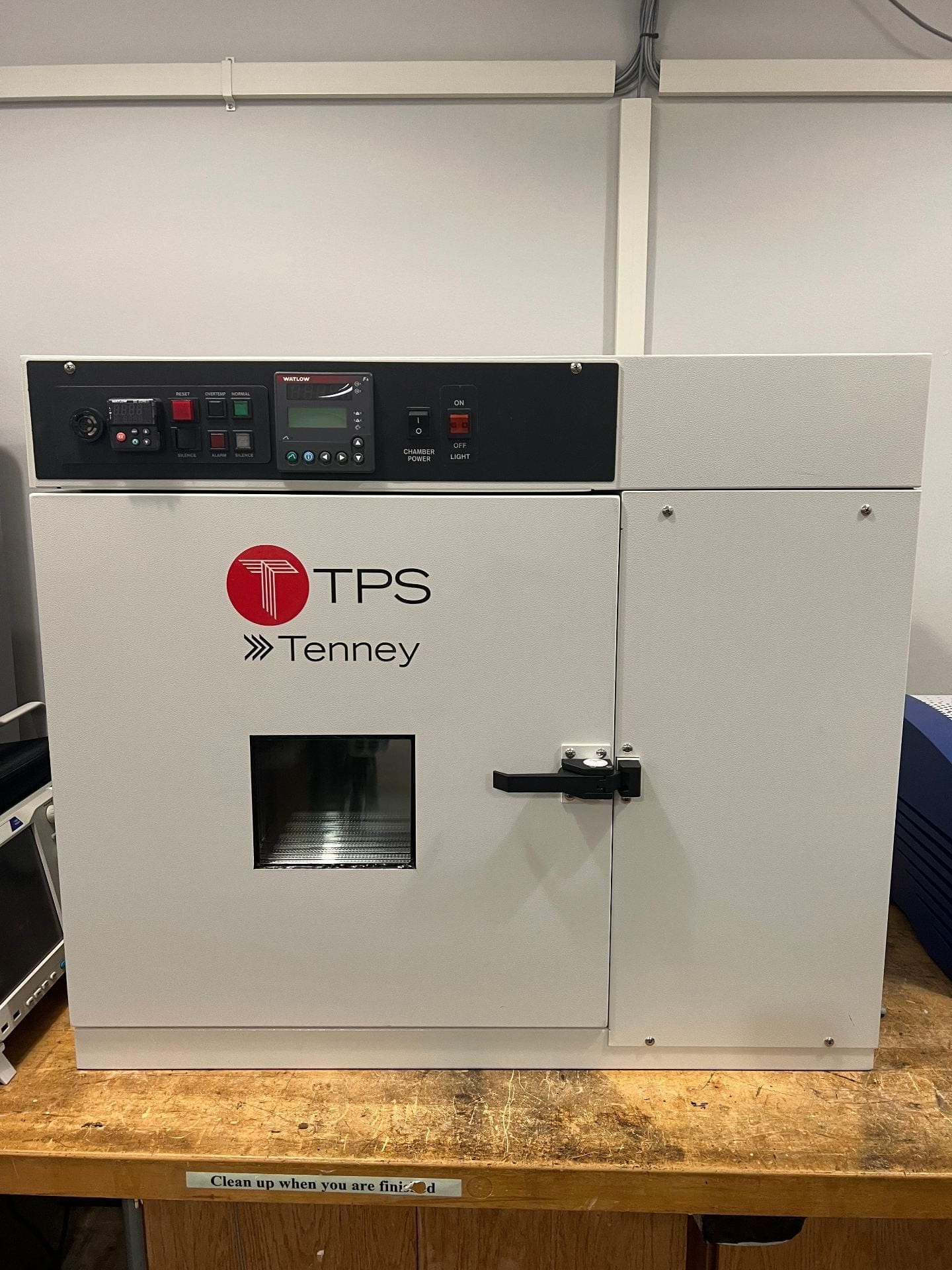 |
| Universal Laser 50W Laser Cutter | Cut out acrylic, wood, and cardboard or engrave metal to create and customize parts for your prototyping project. (Specifications) | 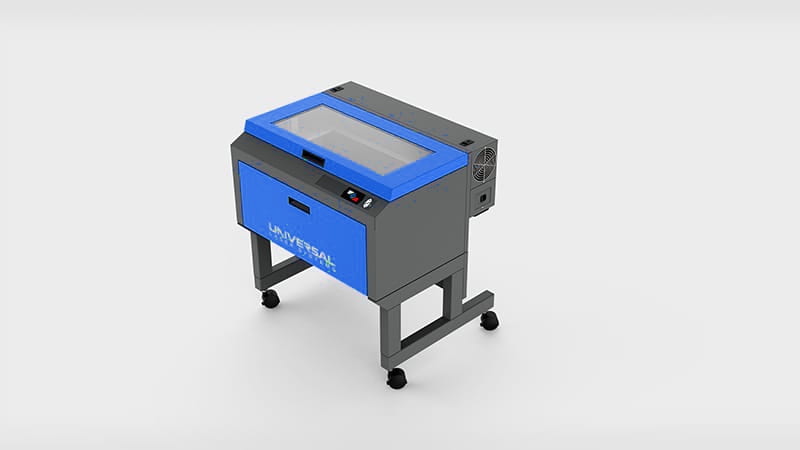 |
357 Machine Shop
The Instructional Labs machine shop is located in Van Leer C-357. There, you can work with wood, metal, and plastic to create the enclosures, parts, and housings that surround the circuits we build. Raw materials and miscellaneous hardware are available for use from all school of ECE students, faculty, and staff.
Access
Due to the nature of the space, the machine shop is only open to students during the open hours of the main office. To access equipment, ask the lab staff to open the room and turn on the machines you need to use. All tools, including the power tools and hand tools must remain in the shop at all times.
Safety
Personal protective equipment can be found on the South wall of the room next to the power tools cabinet. Everyone must wear safety glasses while in the machine shop and obey the two-person rule. There are work gloves, nitrile gloves, face shields, ear plugs, and earmuffs available for use as well as an air purifier and particle vacuums. Different machines in the workshop require different safety equipment and safety protocols. All standing and bench-top machines are on a lock-out system that prevents unauthorized use. For training or questions about safety, you can email the instructional labs team or visit us in our main office.
Equipment
Click to Show
| Equipment Name | Usage | Image |
| Drill Press | Used for drilling precise holes through wood and metal. Video | 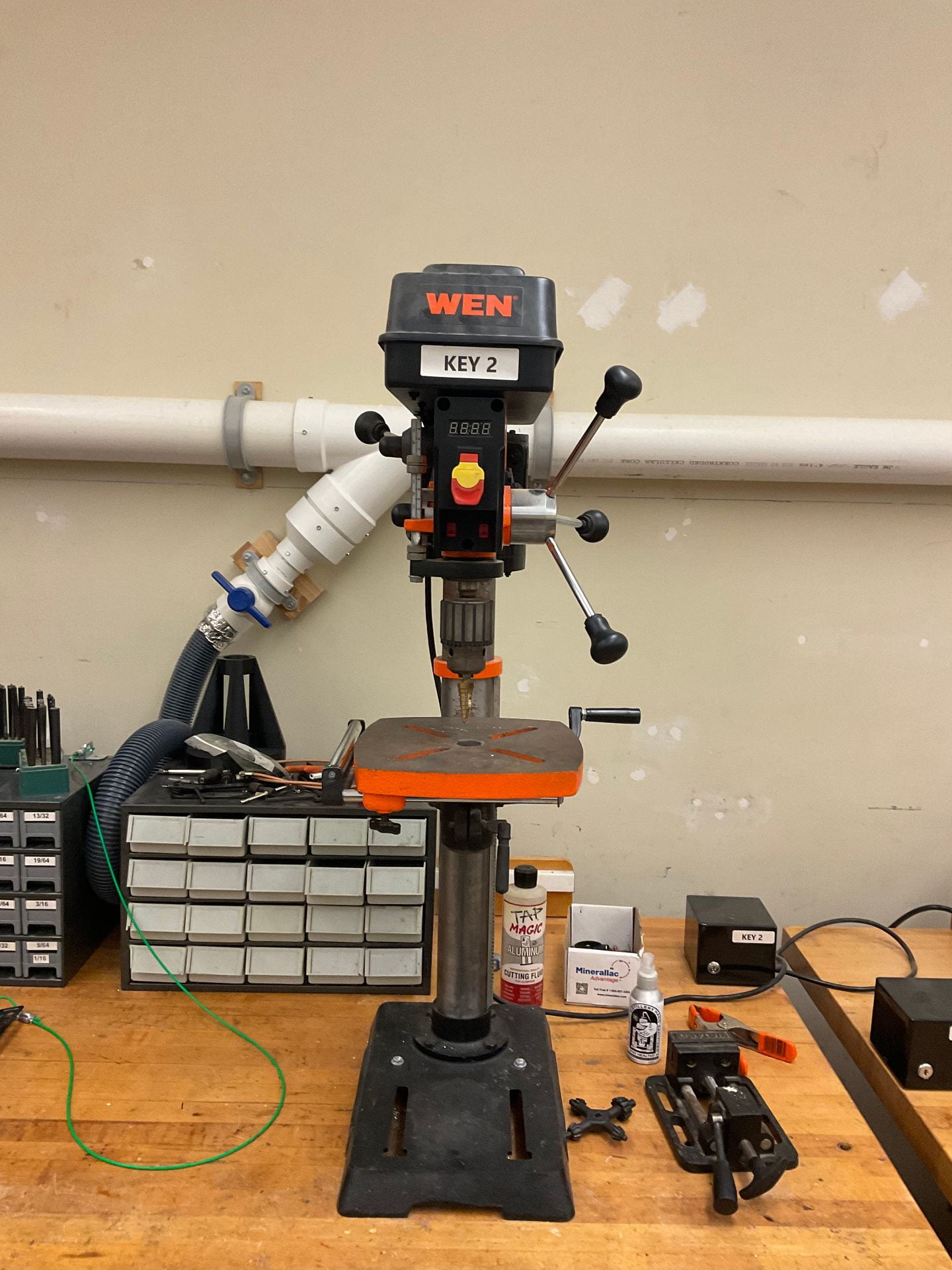 |
| Scroll Saw | Used for cutting out intricate curves and joints in wood. Video | 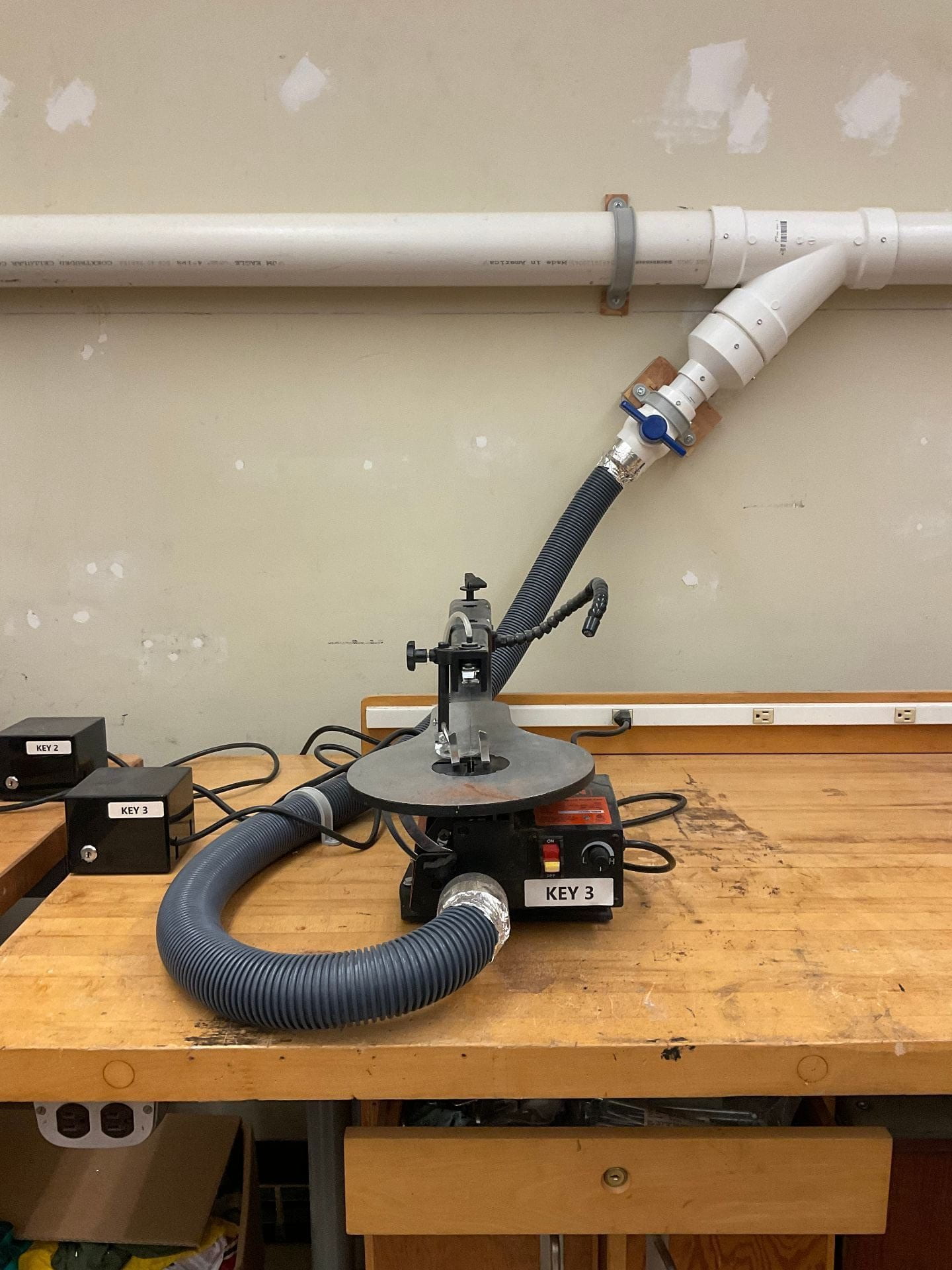 |
| Bench Grinder | Roughly shape metal prior to welding, fitting, or more precise sanding or sharpen tools such as chisels, drill bits, and gouges. Video | 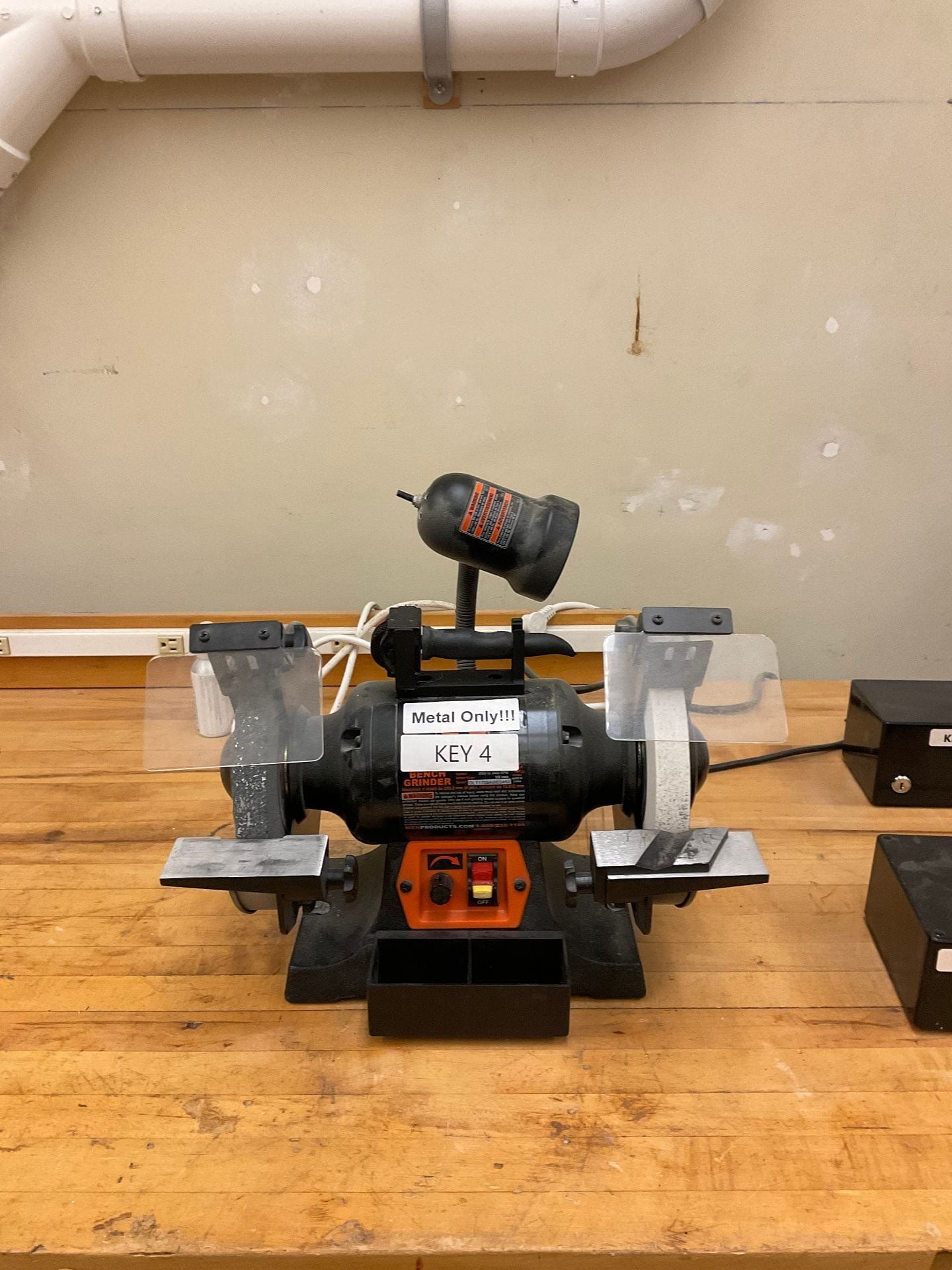 |
| Spindle Sander | Create plain curves, smooth the rough edges, and also cut irregular shapes in wood. Video | 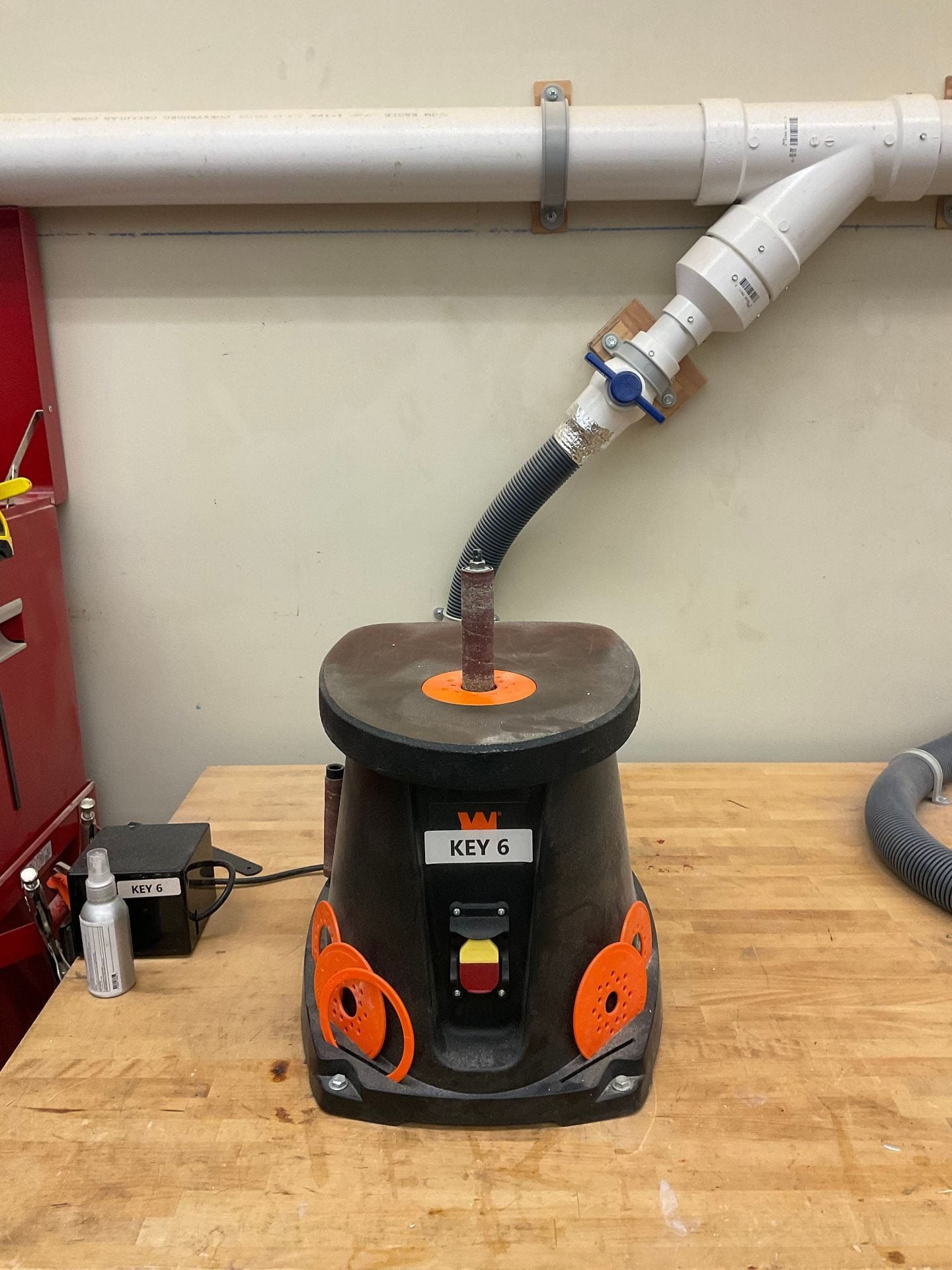 |
| Belt Sander | Used for trimming to a scribed line, sanding rough surfaces, leveling surfaces, and freehand rounding and shaping. Video | 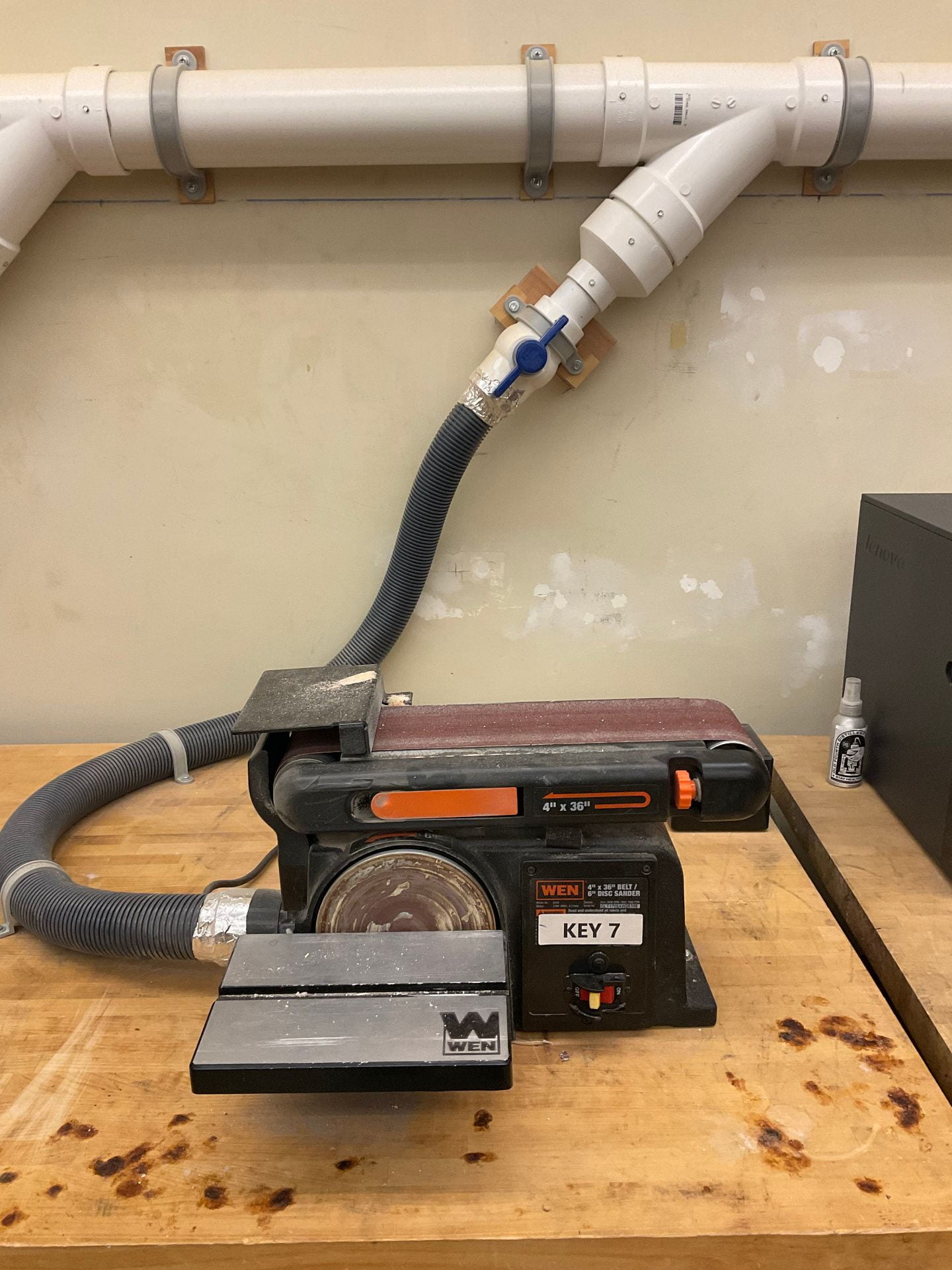 |
| Routing Table | Used to cut joinery, slots, rabbets, cutouts, decorative surface cuts, and more. Video |  |
| Drill Mill | Used for small metal milling and can flatten surfaces and precisely machine parts to desired specifications. Video | 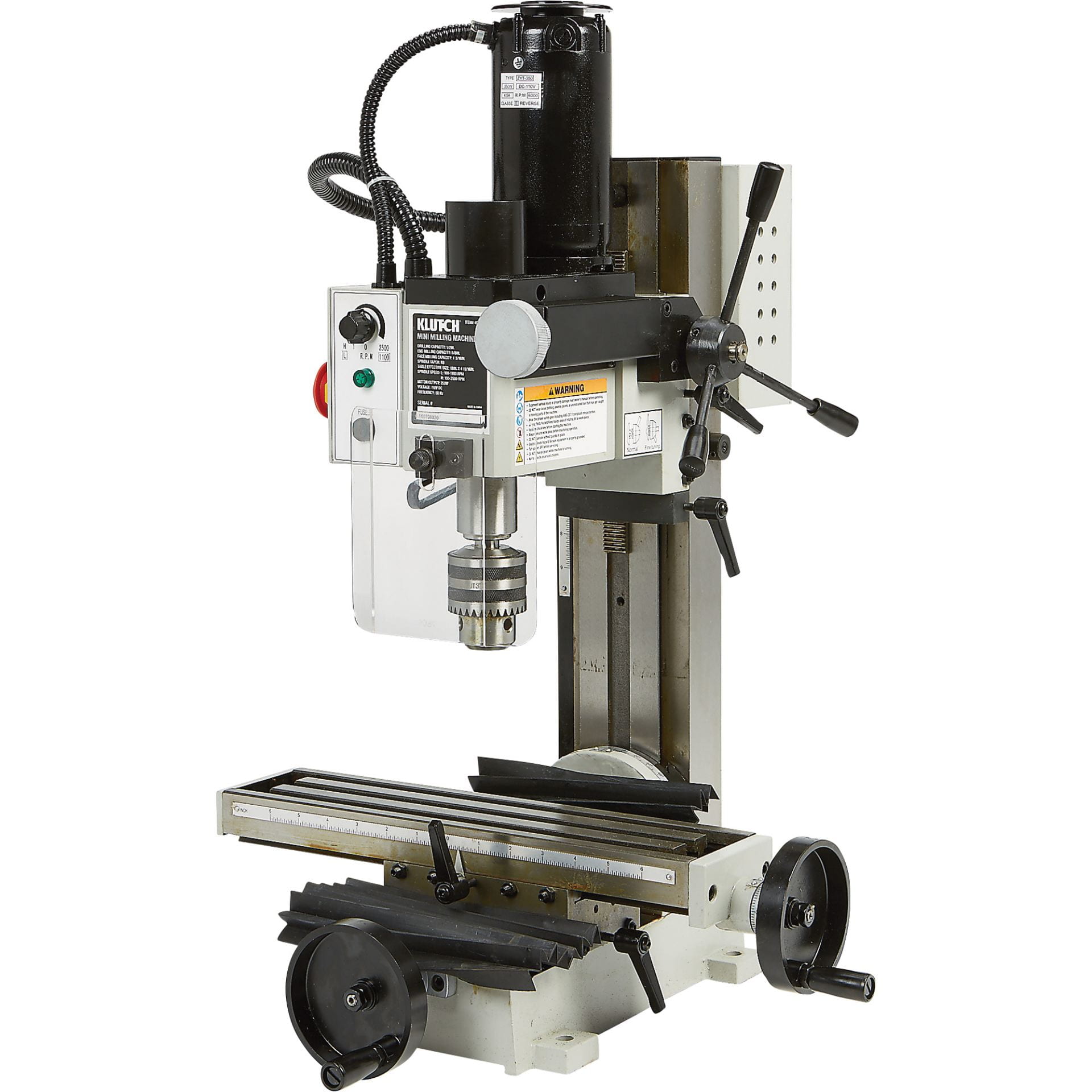 |
| Miter Saw | Used to cut down long boards and accurately cut angles in wood. Video | 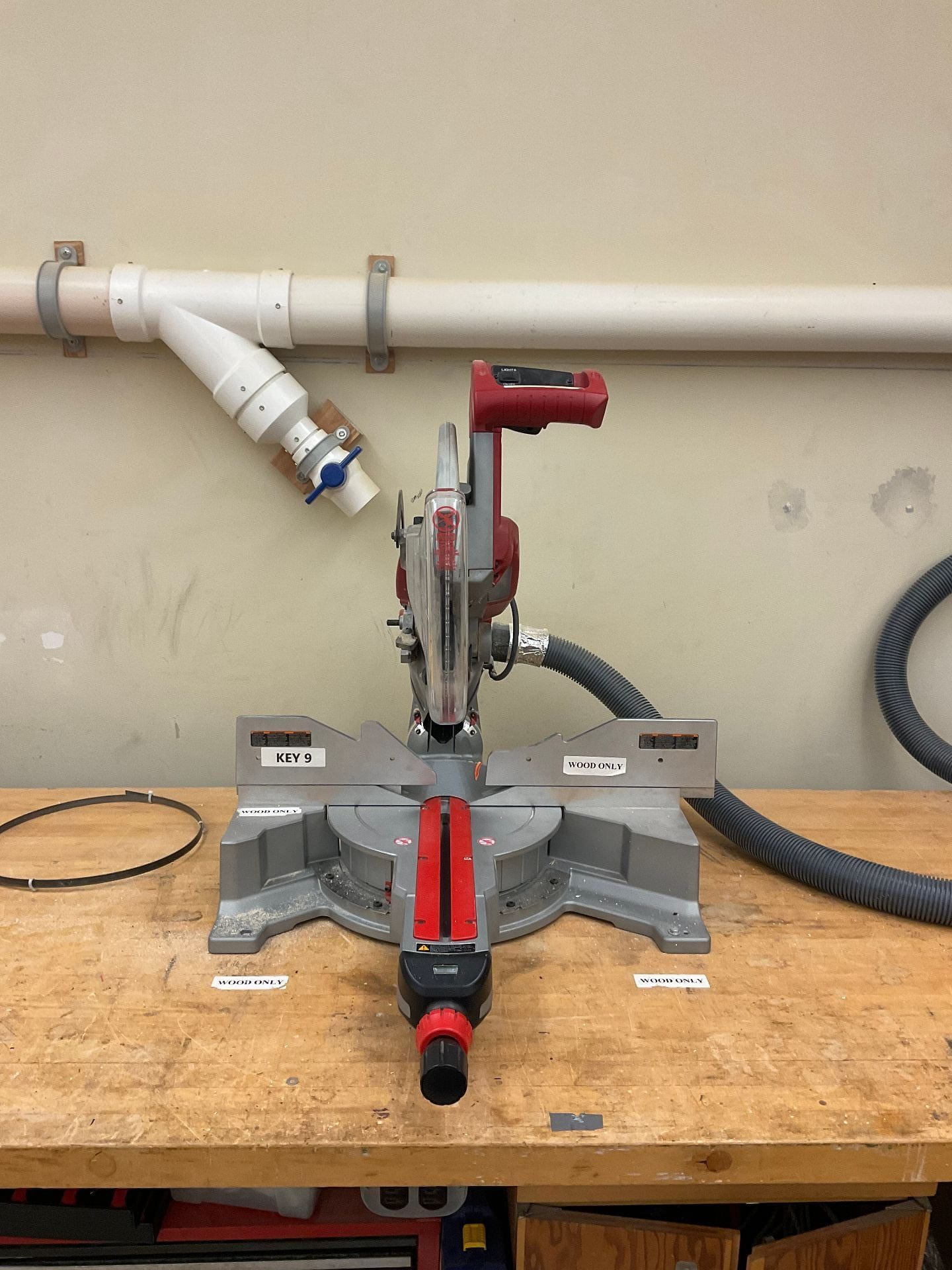 |
| Vertical Band Saw | Used to cut wood, acrylic, copper, and aluminum. Can be used to cut irregular shapes or ripping down material to a smaller size. Video | 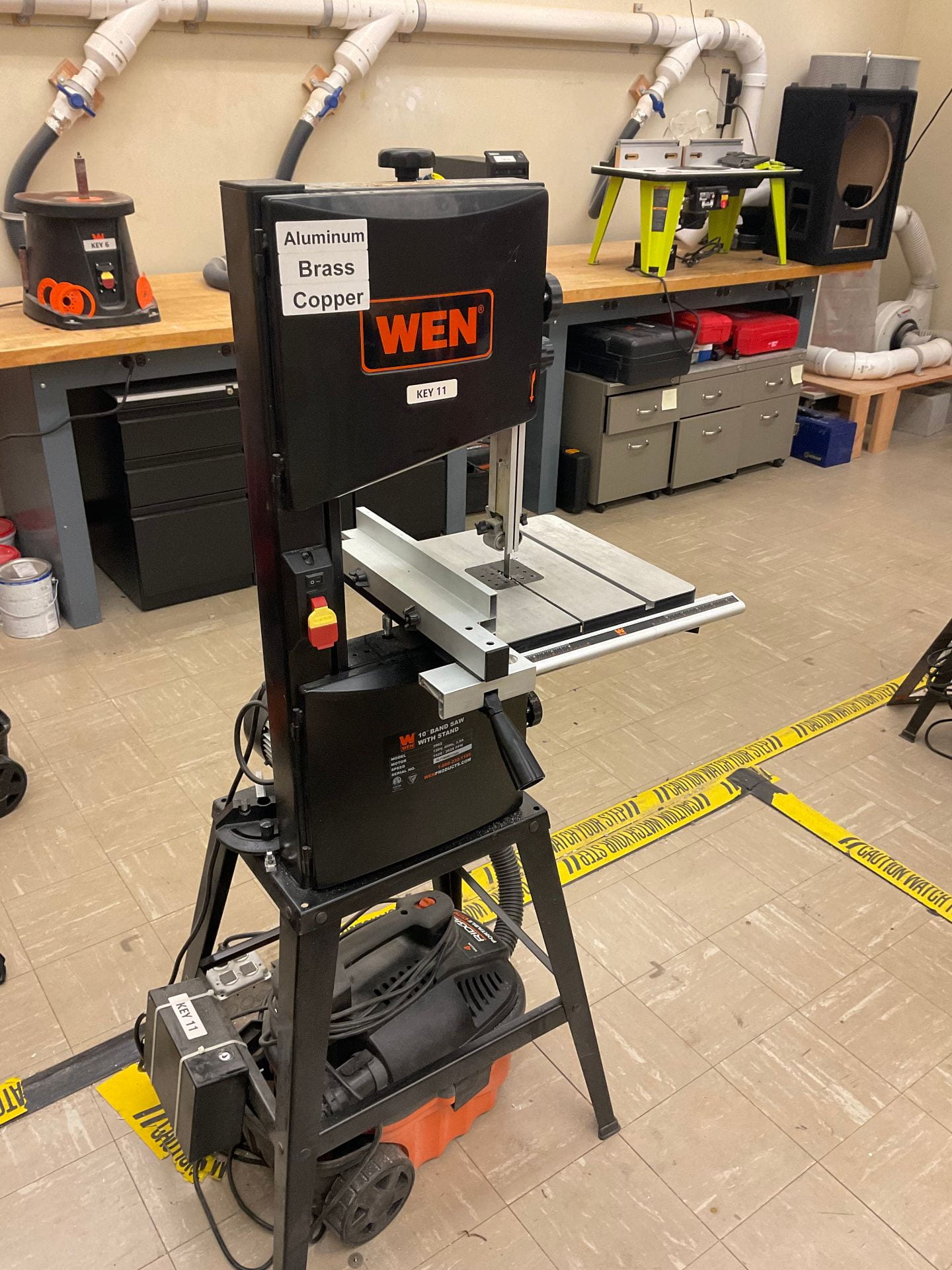 |
| Horizontal Band Saw | Used to ROUGHLY cut steel and other hard materials down to smaller sizes. Video | 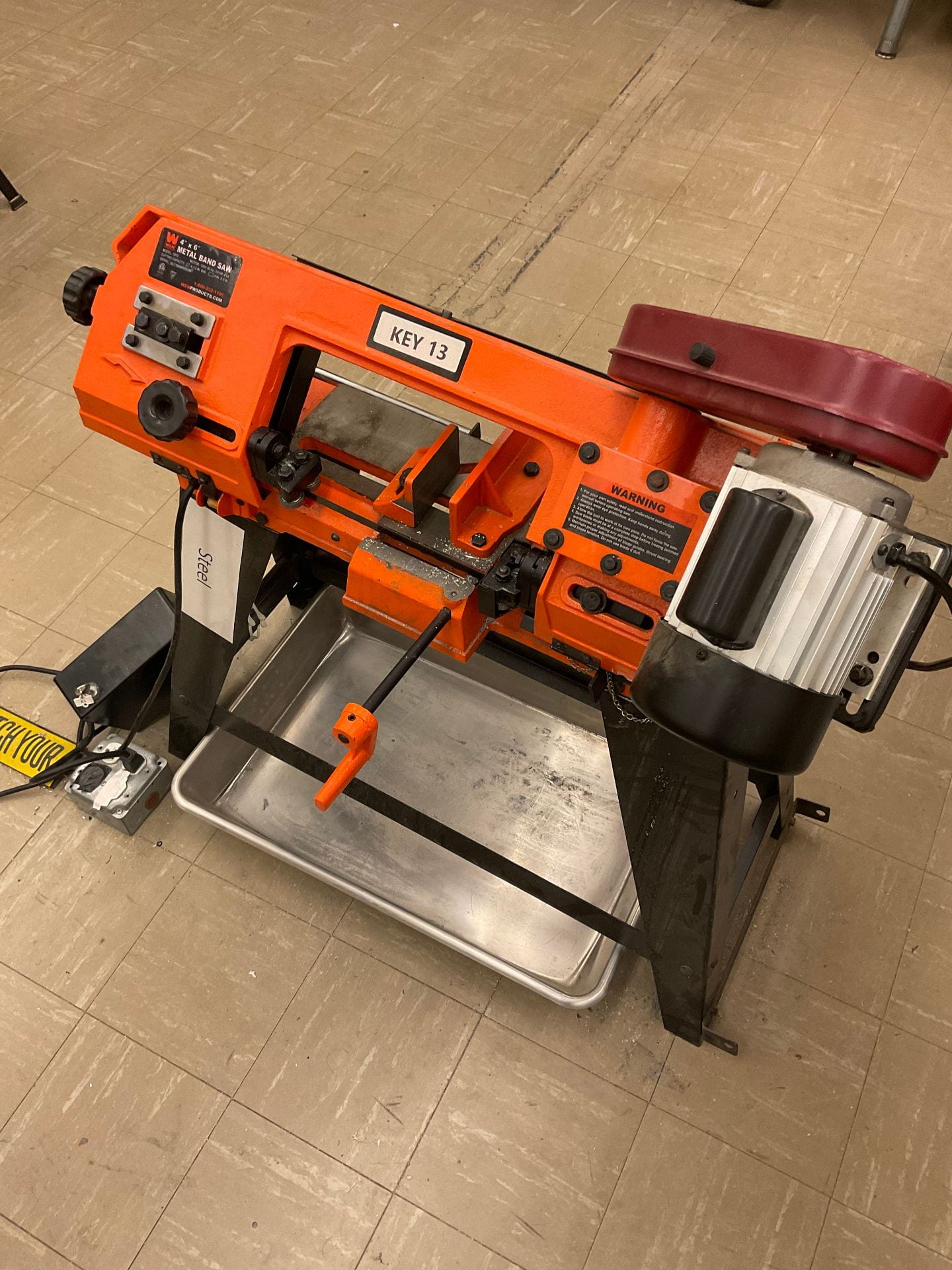 |
| Table Saw | Cut smoother and straighter lines than the band saw. Can be used to cut angles on the edge of wood pieces. Video | 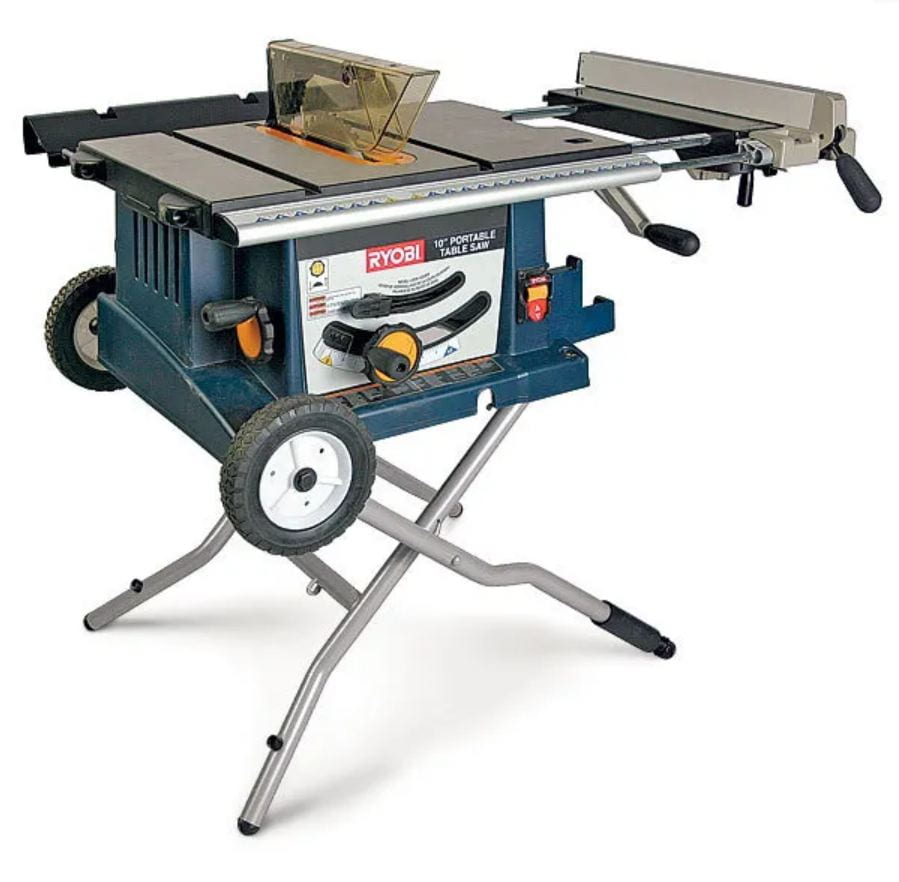 |
| Power Tools | Drills, sawzall, various saws, heat guns, laser level, nail gun, router, and more. |  |
| Hand Tools | Hack saw, wood saw, levels, clamps, chisels, squares, sandpaper, putty knives, punches, wrenches, hammers, tape measures, sockets, screw drivers, files, brushes, and more. | 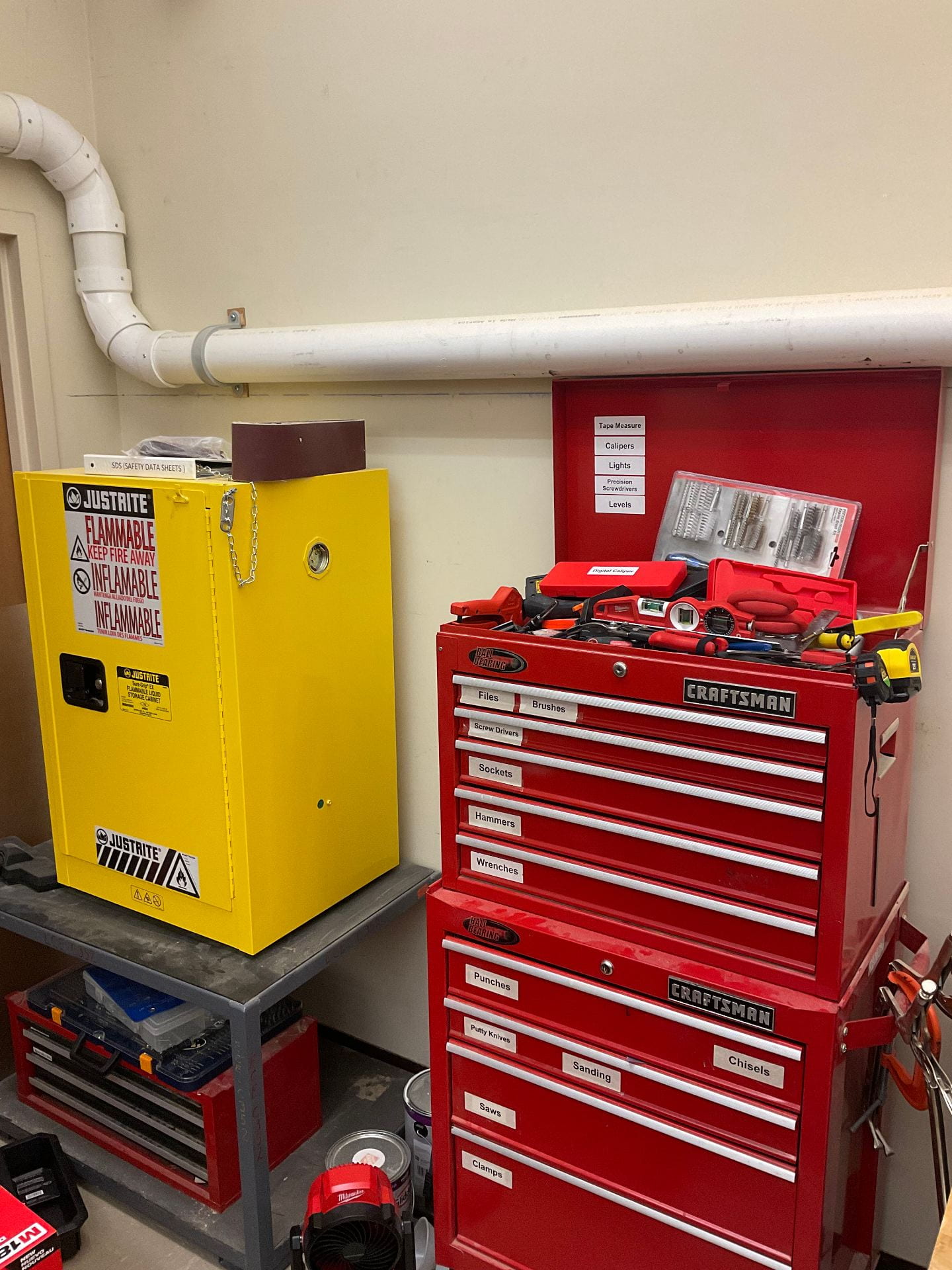 |
363 Electronics Open Lab
Access
Van Leer C-3363 is a dedicated lab space geared towards assembly and testing. Once you have your components, use the open bench spaces and tools to assemble circuit boards and electronic devices, and use the available equipment to calibrate and test.
Safety
Safety glasses and first aid can be found on the front wall of the lab room. Everyone must use safety glasses and the bench-top fume extractors when using the soldering stations.
Equipment
All benches in the lab are supplied with a soldering station, but there is variety in the other equipment on the bench. Some benches only have the soldering station and are otherwise left empty in order to give students space to use tools or assemble components. Other benches have microscopes or inspection scopes to help with small-scale soldering or assembly. Some benches have electronic instruments and computers in order to help with CAD and testing. When picking a bench to sit at, please be cognizant of what equipment you need do not take up a bench with equipment you don’t require.
